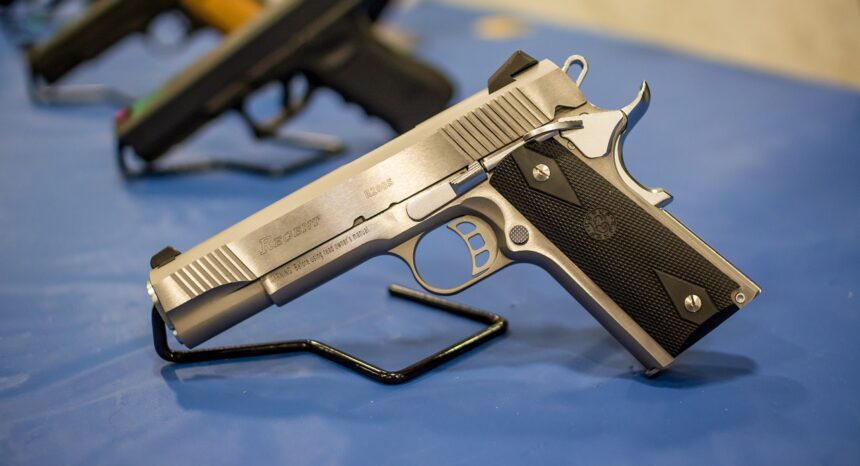More than 30,000 people a year in the United States die from gunshot wounds, whether intentional or accidental. What we don’t hear as much about are the tens of thousands more who are hurt by bullets but survive. In 2013, five people suffered non-fatal firearm injuries for every two who died, according to the national Centers for Disease Control and Prevention (CDC). From 2003 to 2013, 799,760 people sustained non-fatal injuries — nearly 23 percent of which were accidental. This 10-year total includes 82,325 children age 17 and younger.
A number of state and federal laws have been enacted to curb such gun-related violence and accidental death and injury. But it is not clear how effective they have been. A 2005 study by a taskforce appointed by the CDC did not find enough evidence to determine whether federal and state gun laws reduced gun-related violence and injuries. A 2013 study from Harvard did find lower rates of gun-related deaths in states with more restrictive gun policies. The Harvard scholars who completed a 2006 study looking specifically at Child Access Prevention (CAP) laws, which aim to keep guns out of the hands of unsupervised children and teens, did note a larger reduction in accidental, gun-related child deaths in states that have such laws.
A team of researchers from Seattle have looked at the issue from another angle. Their August 2015 report published in the American Journal of Public Health, “State Firearm Legislation and Nonfatal Firearm Injuries,” examines whether stricter state laws are associated with fewer non-fatal gun injuries. The authors — Joseph A. Simonetti, Ali Rowhani-Rahbar, Brianna Mills and Frederick P. Rivara of the Harborview Injury Prevention and Research Center at the University of Washington and Bessie Young of the Seattle–Denver Center of Innovation at the VA Puget Sound Healthcare System — studied 18 states. They analyzed patient data that had been reported in 2010 to the State Emergency Department Databases and to the Healthcare Cost and Utilization Project’s State Inpatient Databases. The researchers focused on individuals who had been treated for a firearm injury in 2010 and were discharged alive from a medical facility. As part of its analysis, the team also assessed the strictness of gun legislation in those 18 states by using state scorecards created by the Brady Campaign to Prevent Gun Violence. Potential scores for each state ranged from 0 to 28, with higher scores indicating stricter laws.
The study’s findings include:
- There were, on average, 19 non-fatal firearm injuries per 100,000 people in 2010. Of the states included in the study, Hawaii had the fewest injuries — 3.3 non-fatal gun injuries per 100,000 people. South Carolina had the most with 36.6 per 100,000 people.
- The median Brady score was a 6, ranging from a score of 0 in Utah to a score of 24 in Massachusetts and New Jersey.
- After accounting for differences in states’ socio-demographic characteristics and economic conditions, states with stricter gun legislation had fewer non-fatal injuries than those with the least strict laws. States with Brady scores of 15 to 28 had 7.9 fewer non-fatal injuries per 100,000 people compared to states with scores of 0 to 4.
- States with strict laws regulating background checks and gun purchases had lower rates of non-fatal injury.
- Child Access Prevention (CAP) laws also were associated with lower rates of non-fatal injury. When researchers analyzed legislation and the records of patients who were 19 years old and younger, they found that states with strict child-access laws had fewer children and teenagers with self-inflicted and accidental firearm injuries compared to states with “non-strict” laws.
The researchers conclude that stricter gun laws may help reduce non-fatal firearm injuries. “These findings have implications beyond the physical and psychological impact of firearm injuries on survivors,” they state. “Recent estimates have suggested that the societal cost of nonfatal firearm injuries in 2010 approached $20 billion … Most of this economic burden falls on taxpayers via costs directed toward Medicare, Medicaid, and the uninsured.”
Related research:
A 2014 study for the National Bureau of Economic Research, “The Impact of Right-to-Carry Laws and the NRC Report: The Latest Lessons for the Empirical Evaluation of Law and Policy,” looks at the relationship between right-to-carry laws and violent crime. Also of interest is a June 2015 research roundup that focuses on mass murder, shooting sprees and rampage violence.
Keywords: gun safety, gun control, firearm legislation, firearm injuries, weapons, child safety


Expert Commentary